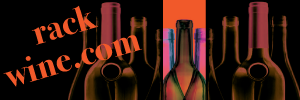
 | How is Champagne made? By sheer genius, sir, sheer genius! - Anonymous, Conversation At White's Club, London |
| Home Wine Tasting Wine Tasting Terms Food & Wine Wine Glossary Wine Facts Wine Quotes Wine in Our Culture | ||||||
Italian Wine
Now the results are here for everyone to see. In Tuscany, the so-called "super Tuscan" wines can be a revelation, especially top blends of Cabernet and Sangiovese, but also straight varietals such as Sangiovese, Merlot, Cabernet Sauvignon and even an occasional Pinot Noir.  Italy is on the move. With its propitious climate and huge areas of vineyard, the country always held promise. But too many cheap and rustic bottlings kept Italy from fulfilling its potential as an Eden of wine. In recent years, however, a real desire to create wines of high quality, backed by investments in technology and advances in vineyard husbandry, has swept the country like a tidal wave. In Piedmont, a small band of winemakers have given the region an exciting direction toward silkier wines. We love a dozen producers here, from Luciano Sandrone to Paolo Scavino, Angelo Gaja, Pio Boffa, Aldo Conterno, Gianni Gagliardo, Michele Chiarlo, Teobaldo Cappellano and Clerico. Few countries are making bigger strides faster than Italy. The Italians do complain that consumers still pigeonhole them as producers of jug wine; this, they say, makes it difficult to produce and sell quality, because consumers resist paying high prices for Italian wines. But every year the audience of true connoisseurs - that is, those willing to shell out as many bucks for top Italian bottles as they do for top French or California ones - seems to expand. Just because the Italians are producing more expensive, high-quality wines doesn't mean that the locomotive of their wine industry, the solid reds and whites at relatively moderate prices, is stalled. From Piedmont in the north to Sicily in the south, Italy is a cornucopia of wine regions that grow dozens of indigenous grape varieties. To be sure, the international varieties (Cabernet Sauvignon, Chardonnay, Merlot) are making inroads, but these are still a drop in the bucket compared to wines made with local varieties. Reaching for an Italian bottle will be easier once you're familiar with the labels. Italian wine labels often fail to mention the grapes used. For example, the backbone of Chianti Classico is Sangiovese, a grape that produces a red wine with a refreshing, crisp texture. But several other grape varieties are included as well, and the percentages can change from year to year. Geographic origins are prominent on the labels. Thus, names such as Barolo, Chianti Classico and Brunello di Montalcino indicate the regulated districts, or appellations, that the wines come from. Valpolicella, a wine region just outside Verona in northeastern Italy, makes a juicy, soft red primarily from the Corvina grape. Even better is the Valpolicella Classico. For an easy, light red, don't overlook Bardolino, grown in the Verona area on the eastern side of Lake Garda. It uses the same grape varieties as Valpolicella but tends to make a distinctly lighter wine.
|
||||||
|
Describing Wine
How To Buy Wine Online
About Fine Wine Auctions
Wine Rating
Champagne Beaujolais Wine Table vs Fortified Vintage Wine Chart Wine Making Wine Grape Varieties Storing Wine Wine Bottles Wine Labels Wine Glasses Old vs New World Wine 1855 Classification Wine Countries The Wine Pact More About Wine
Go To Related Links Find The Site Map Send This To A Friend Send Us Your Comments Link To Our Site Other LinksReport A Broken Link To Us Contact Information |

  |
|||||
| RackWine.com |
Site Map |
Terms of Use |
Privacy & Security |
Contact Us |
Purchase Agreement |
Send Feedback |